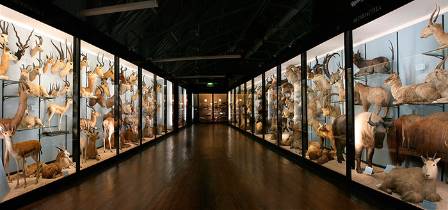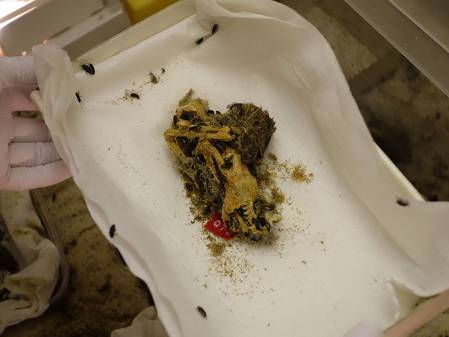Last week I was lucky enough to escape my office in London for a day out at the Museum in Tring. Just 35 minutes after boarding a train at Euston, I arrived at Tring station and was picked up for the 2-mile drive to Walter Rothschild's former home.
Of course Tring wasn't just Walter's home: it was home to his extensive private collection of natural history specimens, as well as a menagerie of live animals including cassowaries, kangaroos, tortoises and zebras. Many of those animals - after they had died their natural deaths - went on to become specimens in the Museum, which his family bequeathed to the nation following Walter's death in 1937.
Kangaroos in Tring Park in the early 1900s (left), and now on display in the Museum (right).
Today, the Museum retains its unique Victorian character, and many of the 4,000 specimens in the galleries are still arranged in the very particular way Walter had dictated during his life. It really is a museum of a museum.
A gallery photographed in 1910 (top), and many of the same specimens displayed in much the same way more than 100 years later (bottom).
During my day out at Tring I was treated to a guided behind the scenes tour of the specimen storage and preparation areas. From the spirit collection (which numbers around 17,000 jars; the oldest specimen being a Hawaiian honeycreeper collected by Captain Cook in 1772), to the room where flesh eating beetles clean up bird carcasses in readiness for storage in the skeleton collection (as can be seen on our YouTube channel here). I even got to take a peek into Walter's personal library, where the ironwork on the upper floor is modelled after the Eiffel Tower.
Part of the spirit collection (top), and flesh eating beetles at work (bottom).
The scientists and curators I met proudly informed me that Tring boasts the largest ornithological library in the world, and holds the second largest collections in the world of bird skins (750,000 pieces, which represents 95% of all known species) and bird eggs (around 300,000 clutches, which represents 52% of all known species). Oh, and its collection of 4,000 bird nests is housed in the longest run of roller rack in Europe (15m).
Prepared bird skins in the drying rack. The skins are wrapped around cotton wool and a popsicle stick.
Out from behind the scenes and into the public galleries, Tring is a marvel. Walter's original floor-to-ceiling, glass-fronted hardwood and iron cabinets are almost bursting with an overwhelming array of mounted specimens. And it is this sense of history, variety and eccentricity that make Tring such a special and wonderful place.









